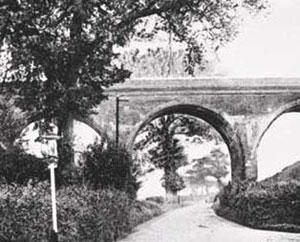Heritage
HAVERHILL'S origins, like those of many other ancient towns of England, are lost in the mists of time. The earliest mention of it is in the Domesday Book of 1086 which records a market, and it is to this that the town owes its early importance. A castle is referred to in the early medieval period, but until the 14th century the town was essentially an agricultural area enjoying the privileges of a weekly market and two annual fairs.
During the Middle Ages, Haverhill developed into one of East Anglia's prosperous wool towns. As a result, in the 17th century it became a natural haven for refugee Huguenot and Flemish weavers, who settled here and introduced new methods of weaving.
When the wool trade receded, it was replaced by the manufacture of 'checks' and 'fustians', then silks and drabbets. After the introduction of the steam loom by Gurteen's in 1856, this manufacture became the principal industry.
Whilst most of the historical buildings were lost to the great fire of June 14 1667, the town retains one notable Tudor structure, Anne of Cleves House, reportedly given to Anne as part of her divorce from Henry VIII.
There are many fine Victorian buildings, among them the Board Schools built in 1877, the Town Hall in 1883 and the Old Independent Church in 1884. Haverhill is still regarded as the nonconformist capital of the region.

In 1801 the population stood at 1,104, by 1841 it had nearly doubled to 2,159, and by 1911 it had risen to 4,749. In the 1950's an expansion scheme between the Haverhill Urban District Council and the London County Council was initiated, and by 1957 the first factories to be set up under this programme were being opened.
Today the town continues to expand, mainly through private development and investment, and has already grown into one of the largest towns in Suffolk.

An Introduction to Haverhill
Taken from the 'Welcome to Haverhill' Brochure, available from the Haverhill Library.
A Bit About Haverhill
Taken from 'The Haverhill Directory' published by the Haverhill Town Council.
The History of Haverhill
An informative account of Haverhill's history written and researched by Michael Horne.
Haverhill was Named after a Pirate
This article is as printed in "The Haverhill Echo" 1971.
The Old Windmills of Haverhill
Did you know there used to be windmills in Haverhill?